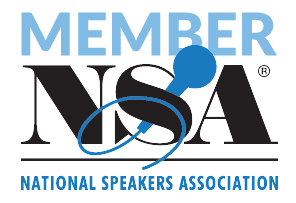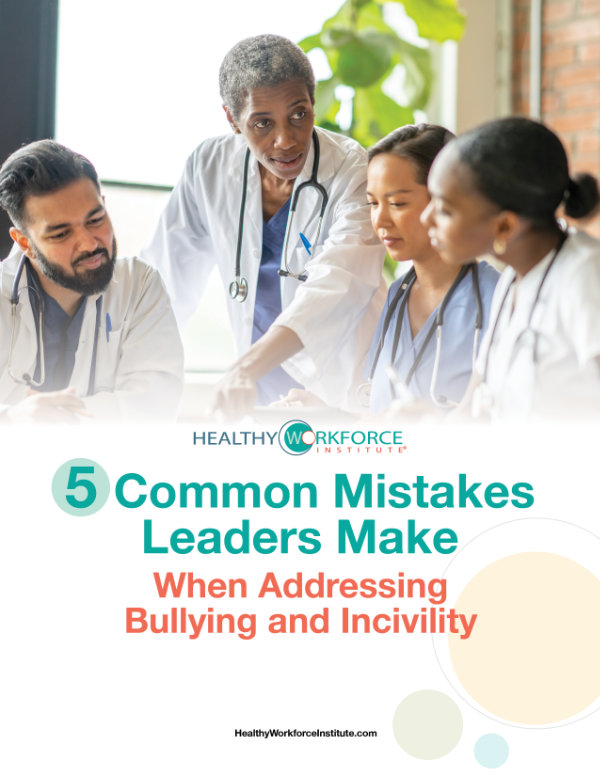 Did you know that there are more bullying and deviant behaviors in the healthcare industry than in any other industry? While nurses, physicians, and technicians can be so caring and compassionate to their patients, they can be cruel towards each other. Disruptive behaviors are tolerated, even though study after study shows the negative impact they have on employee retention and patient outcomes. The reason is because we’ve accepted bad behavior as the norm in healthcare. We fail to recognize deviant behaviors because it’s “just the way it is here”. Therefore, the first step to stop bullying, incivility, and deviance is by raising awareness of behaviors that undermine a culture of respect, professionalism, and patient safety. After all, you can’t expect people to adapt their behavior if they don’t realize their behavior needs to be adapted.
Did you know that there are more bullying and deviant behaviors in the healthcare industry than in any other industry? While nurses, physicians, and technicians can be so caring and compassionate to their patients, they can be cruel towards each other. Disruptive behaviors are tolerated, even though study after study shows the negative impact they have on employee retention and patient outcomes. The reason is because we’ve accepted bad behavior as the norm in healthcare. We fail to recognize deviant behaviors because it’s “just the way it is here”. Therefore, the first step to stop bullying, incivility, and deviance is by raising awareness of behaviors that undermine a culture of respect, professionalism, and patient safety. After all, you can’t expect people to adapt their behavior if they don’t realize their behavior needs to be adapted.
We have blinders on
A participant in my online course, Eradicating Bullying & Incivility: Essentials Skills for Healthcare Leaders told me she wasn’t sure WHY she was asked to take my course. She didn’t think they had a problem. After she completed the course, we talked. She shared that for 29 years she had become numb to the eye rolling, condescending attitudes, nit picking, and even the overt criticisms, gossiping, and mocking. She just didn’t notice it. However, once she took her “blinders” off, she was appalled at how badly people treated each other. She had normalized the deviance!
Don’t be a frog
If you take a frog and you drop it into boiling water, the frog will jump out. But if you put a frog into tepid water and slowly increase the temperature to boiling, the frog will sit there until it boils to death because the frog doesn’t recognize its environment has now become toxic.
You know you’ve normalized deviant behaviors in your organization when you hear things like…
“Well, that’s just the way she is. Don’t take anything she says personally.”
“If you have any questions, don’t go to him. He doesn’t like people very much.”
“Just ignore her tirades. She’s a really great nurse.”
We’ve accepted deviant behaviors to the point where we fail to recognize them as abnormal. We’ve in a sense; become boiled frogs swimming in a pond of badness.
Taking the blinders off
- 48% of registered nurses admit to being bullied in the workplace during the previous 6 months, with 35% reporting that they had experienced it on a weekly basis, and 28% reporting that they had experienced it daily (Etienne, 2014).
- A recent Occupational Safety and Health Administration (OSHA) survey reported over 50% of registered nurses and nursing students were verbally abused (a category that included bullying) in a 12-month period.
- 2016 National Healthcare Retention & RN Staffing Report showed that 70% of nurses reported an association between disruptive behaviors and compromised quality of patient care.
Numerous studies show the prevalence and devastating impact disruptive behaviors have on retention, patient safety, and the financial health of the organization, yet in a recent study only 9% of top healthcare executives identified addressing disruptive behaviors as a top priority.
Ethical Responsibility
Regulatory agencies and professional nursing organizations are finally recognizing the impact disruptive behaviors have on patient safety and are now holding healthcare organizations accountable.
In The Joint Commission’s (TJC) Quick Safety Issue #24 and their more recent 2018 Sentinel Event Alert, they recommended ongoing training and education for employees and prevention interventions to reduce incidents of disruptive behaviors.
In 2017, The American Nurses Credential Center (ANCC) added addressing disruptive behaviors to their Magnet® Recognition requirements.
Healthcare organizations have an ethical responsibility to stop bullying and deviant behaviors in healthcare and are now being held accountable to do so.
How to heighten awareness of deviant behavior in healthcare
I’ve been conducting workshops on addressing disruptive behaviors for almost 10 years. One of my favorite comments was from an executive leader who basically said… We had a wound we didn’t know we had. A nice Band-Aid covered the wound that we didn’t know was there. You came in, ripped off the Band-Aid and exposed the wound!
It’s time for healthcare organizations to rip off the Band-Aid to expose their wounds. Here are a few ways to do that.
-
Infuse content related to behavior everywhere
You have to heighten awareness of behaviors that undermine a culture of safety by infusing content related to behavior everywhere. Include content regarding behavior in orientation, in your nurse and physician residency programs, preceptor programs, leader orientation and ongoing leadership development, etc. Include content related to conduct in everything ongoing, i.e. staff meetings, leadership meetings, performance reviews, annual competencies, etc. Not just when employees are hired. Every employee should know that the way they treat each other matters.
-
Pay attention
Like the leader in my course, start paying attention to your coworkers by standing back and observing. Like a fly on a wall does right before pouncing on your picnic barbeque! You’ll be amazed at what you see and hear.
Pay attention for these types of statements:
You’ve got to pay your dues.
It’s always been done this way.
I’m making her a stronger nurse.
If she thinks I’m hard on her wait till she meets _______.
Just suck it up buttercup.
It’s sink or swim here so if you want to survive, you’d better learn how to swim.
Just ignore him like everyone else does.
Trust me. If you’ve been normalizing bad behaviors in the past, once you rip off the Band-Aid and discover the wound, you’ll have no choice but to treat the wound.
-
Look in the mirror
If 73% of us report witnessing or experiencing disruptive behaviors, the disruptors can’t be everyone else. We each have to look in the mirror to determine how we contribute (good or bad) to our workplace culture.
Click here to take our self-assessment titled, “What If You Are the Bully?”
Bullying and incivility are alive and well in healthcare, yet we’re hopping around like boiled frogs, ignorant to our surroundings. If you’re not doing anything about this in your organization, not only are you putting your patients and employees at risk, but you’re also in violation of regulatory requirements. Make a commitment starting today that you will no longer just accept bad behavior as the norm and that you’ll take action. The way we treat each other SHOULD be just as important as the care we provide!












